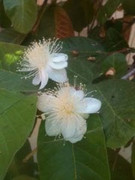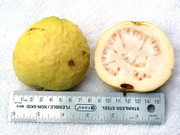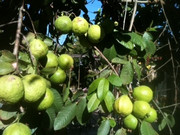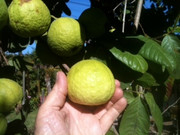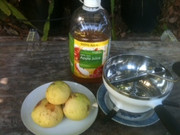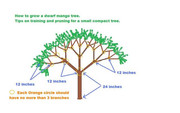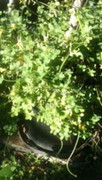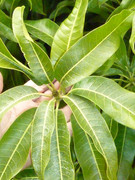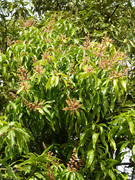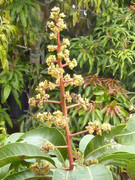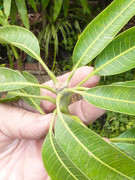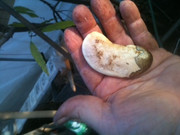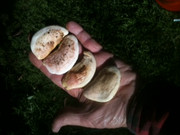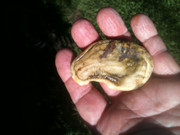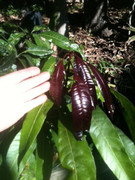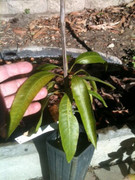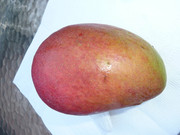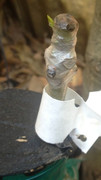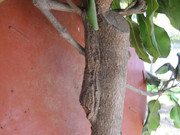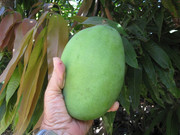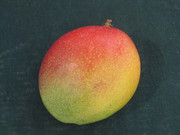1
Tropical Fruit Discussion / Re: Mango Pests, Diseases, and Nutritional Problems
« on: June 29, 2014, 07:05:26 PM »
Hello tropical fruit lovers: I am frequently asked to do presentations for garden clubs and other gardening organization get-togethers. At a presentation last week a number of those present were talking about planting mango trees. I was asked to give suggestions on what to do to protect young mango trees when Winter comes. My first suggestion was to get 4 tree stakes like the ones in the picture that I used to support my large tree fern when I moved it. You can get these tree stakes at Home Depot, Lowes or most nurseries. They are round, about 2 inches in diameter and 8 feet long. This suggestion applies to all young trees that are planted in the ground and will work for papaya, guava, etc as well as mango trees. Drive the four stakes into the ground to form a square with your young mango tree in the center of the square. Leave enough space to clear the widest branches. Pick up several cheap drop cloth type painting tarps that will form a good cover for your young tree. When Winter comes and a freeze is predicted for your area, cover the tree over night and remove the tarp after sunrise.
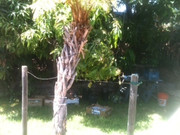
A second option is to use your old Christmas lights and wrap the young tree as if you were decorating it for Christmas. A young tree may only require one string of Christmas lights. An older tree might need a couple of light strings. You MUST use the older incandescent type of Christmas lights because they produce heat. The new Christmas lights are cheaper to run but they are cold and will do nothing but make your tree look pretty. The main advantage of using your old outdated Christmas tree lights from the garage rafters besides the price is that you can wrap the tree before any freeze is predicted and leave the lights on the tree until there is no longer any frost danger. If you don't still have your old Christmas tree lights, hit a few garage sales or check out the neighborhood to still if anyone has left theirs on the house from last year. If you see a house with the lights still on the house, knock on the door and you might get a string of lights for free! When a freeze is predicted just run out your good quality extension cord, plug the lights in and know that your tree will not only look pretty but be safe from the freeze.
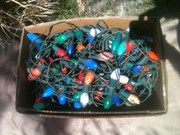

A second option is to use your old Christmas lights and wrap the young tree as if you were decorating it for Christmas. A young tree may only require one string of Christmas lights. An older tree might need a couple of light strings. You MUST use the older incandescent type of Christmas lights because they produce heat. The new Christmas lights are cheaper to run but they are cold and will do nothing but make your tree look pretty. The main advantage of using your old outdated Christmas tree lights from the garage rafters besides the price is that you can wrap the tree before any freeze is predicted and leave the lights on the tree until there is no longer any frost danger. If you don't still have your old Christmas tree lights, hit a few garage sales or check out the neighborhood to still if anyone has left theirs on the house from last year. If you see a house with the lights still on the house, knock on the door and you might get a string of lights for free! When a freeze is predicted just run out your good quality extension cord, plug the lights in and know that your tree will not only look pretty but be safe from the freeze.


